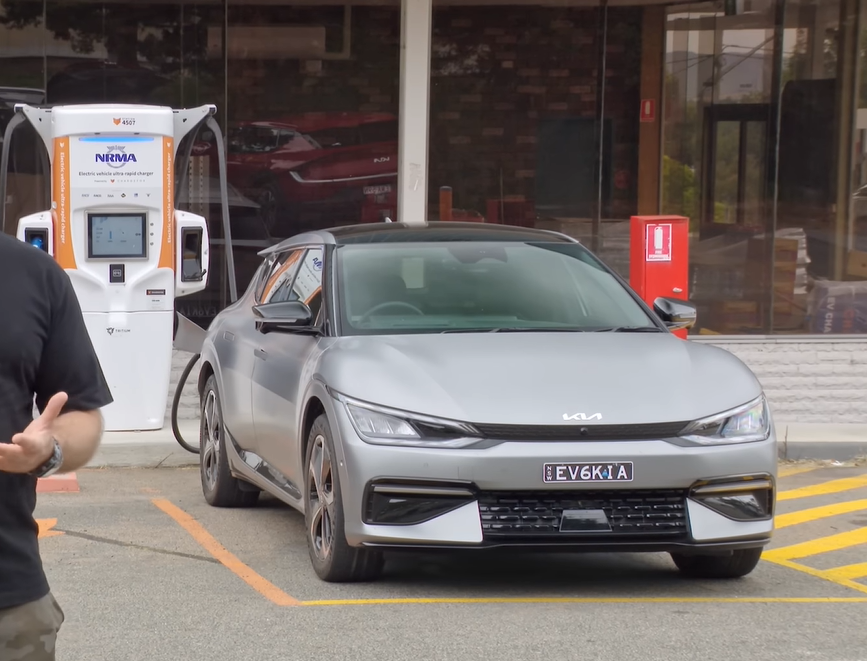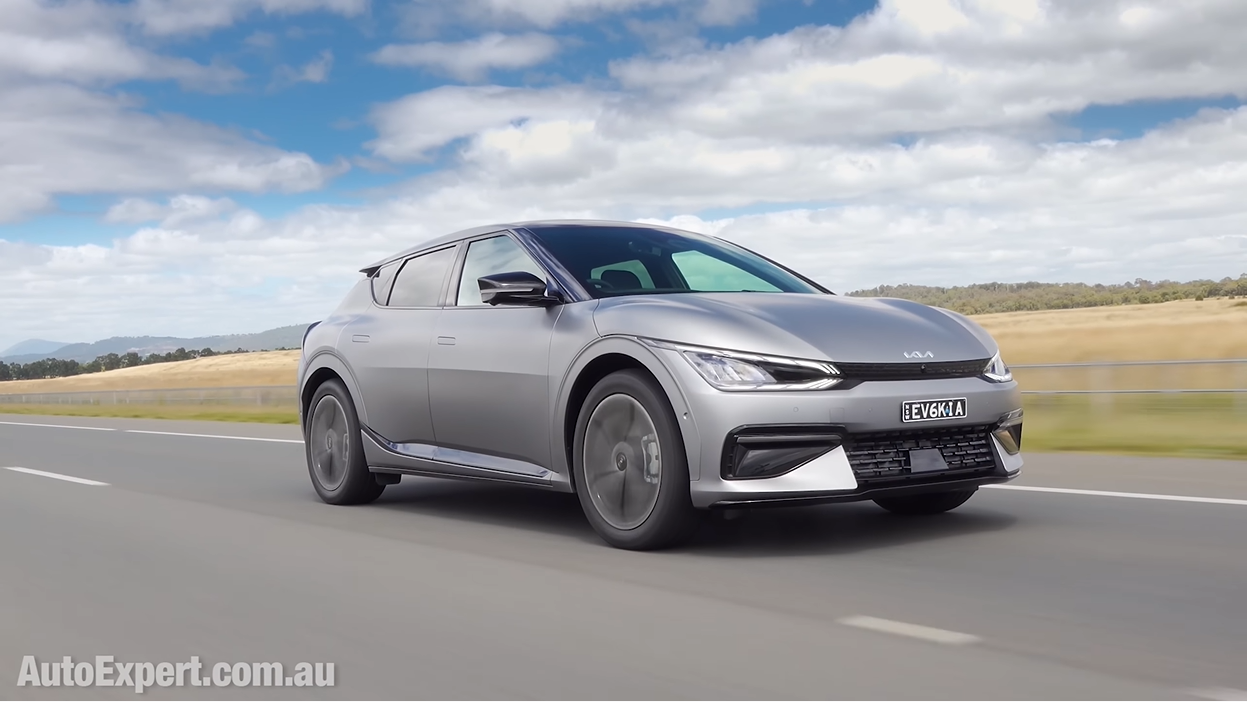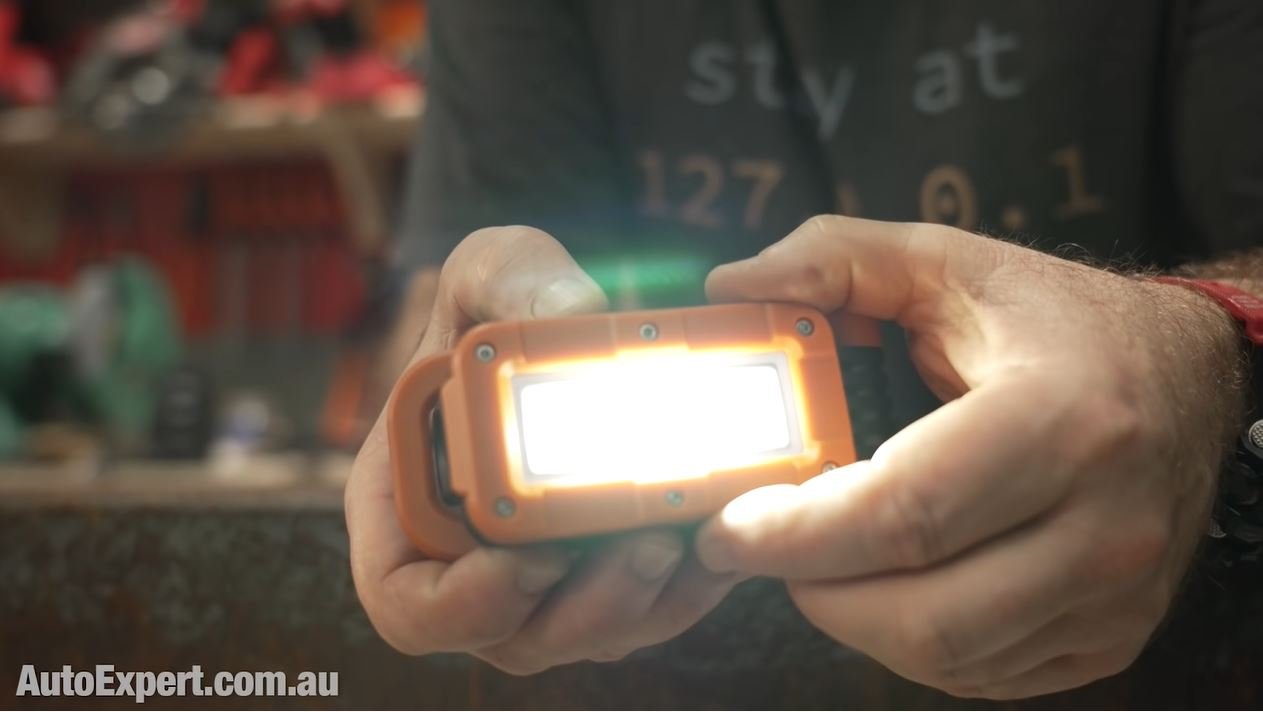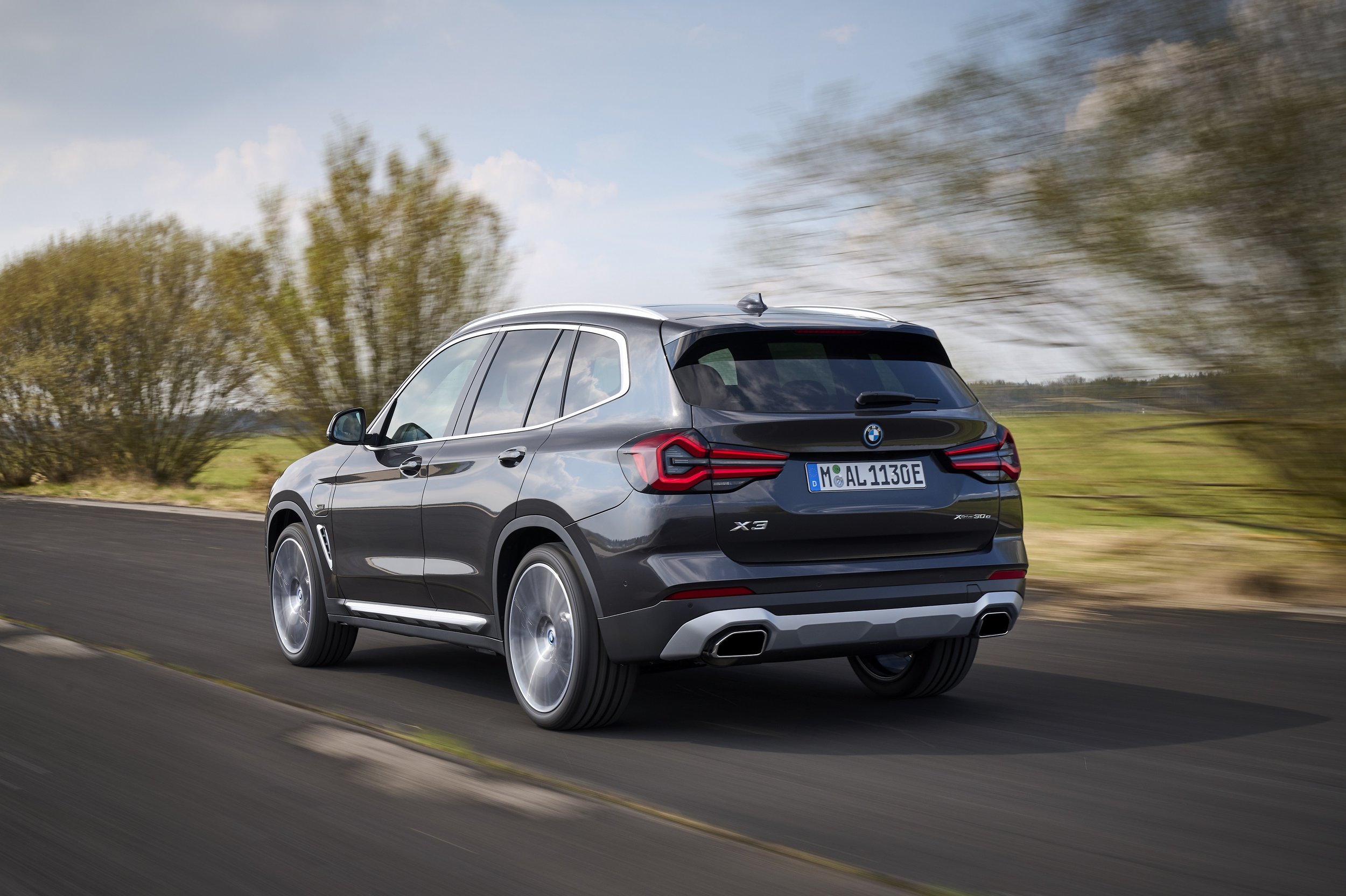The worst thing about owning an electric vehicle today, in Australia is…
Considering an EV for your next new car? Do you actually know what the worst part of the ownership will be? You might have read biased comments and followed Elon Musk on Twitter but it’s far more basic…
It’s not being an insufferable enthusiast, untangling the cable then waiting for it to charge, the immeasurable emissions caused by making a two-tonne battery-powered car, nor is it the stupid run-flats or tyre goop, or the hiding of every fricken function behind a big, distracting LCD touchscreen.
The worst part of actually owning an EV is far more basic than that...
It’s not even the fact that statistically you have to plug it in every night to the proud Australian coal-fired electricity grid. Nor is it the purported range anxiety which seems to be the only thing the mainstream news media can think of when it comes to negative EV ownership propositions.
Let’s put aside the extraordinary cost of EV ownership, because it's just not going to be economically rational for a while, obviously.
As crap as the ‘autonomous nervous-driving systems’ are, which struggle to follow white lines on black roads or to adjust your speed in a timely fashion as traffic conditions change, these are still not the biggest causes of elevated blood pressure in the average EV owner.
The undeniably worst aspect of owning an electric vehicle today is the public charging infrastructure. It’s a national disgrace. It’s on-par with the utterly third-world NBN internet infrastructure.
A couple of months ago, I attended the Kia EV6 launch in Canberra, and I live in Sydney, which is about 300 kms door-to-door.
The EV6 is a very nice grand tourer, a bit expensive and quite scarce (some would say unavailable including Kia Australia.
It's fun to drive, provided you don't go full performance nut case, rates at about an 8-9 out of 10. The EV6 is one of those vehicles that is blisteringly fast between the bends, but is pretty easy to overcook if you push too hard. Not many cars rate over about 7.5/10.
Driving it home from the launch at Hotel Realm, I intended to use it as my daily driver for about a week. Hotel Realm has EV chargers in the carpark, except they were all broken on the night I stayed. Just the start of the inconvenience on an otherwise useful Saturday morning - there I was holding the keys to an EV6 in a basement full of EV6 chargers not functioning.
Luckily, I had 200kms of range. Except that doesn’t get me 300km to home, does it? In the nation’s capital travelling to the most populated city in Australia.
Surely, the nation’s capital is full of public chargers in 2022, and I’m reliably informed that the closest public charger in in Civic, which would be considered downtown Canberra. Frustratingly, it was rooted.
I opened up the EVIE app on my phone, which tells me that there's a charger conveniently located on the way out of town, in a public car park just off Northbourne Avenue - great. EVIE’s app is actually pretty slick, it integrates with Google Maps and it navigates me right there. I’ve absolutely no doubt about where I am. Unfortunately, however, there's no charger and I walked every square inch of that bloody car park - twice!
Luckily, I'm already 15 kms or something closer to home at this point, and there are three chargers in Goldman which I know exist because I’ve used them before, and i've got more than enough battery to get there. New plan, off I go.
Having nudged the EV6's adaptive cruise control along the Federal Highway at 110km/h, I watched the range plummet, seemingly, dropping two kilometres for every actual one kilometre of progress. To be fair all EVs do this because highway driving is their least efficient operational mode - I arrived in Goulburn, with plenty of electrons to spare.
But not enough to get home.
Here's the reality of EV ownership - you can spend 80 grand on a very nice EV and you can really enjoy driving it, but you will have to engage with the infrastructure and manage the logistics of recharging. Sorry, but this is a fact. You have to plan everything.
Having left Canberra with about 50 percent worth of battery and 238kms of range, I pulled in to Goulburn with 100-ish kilometres left, at best. Reality is, the numbers told me I was not going to make it home. Three chargers in Goulburn gave me hope.
One of these charges has a blank screen and was being reported by the app as broken, another one of these chargers is properly broken, and one is functional - thankfully - otherwise it’s sleeping in the car while it charges from a 10-amp well outlet.
When you're driving a gasoline or diesel-powered car, there's recharging infrastructure everywhere. Driving an EV, it’s hit-and-miss unless you only use it for just going from home to the shops and school drop-offs. If you've got an EV you're going to be dealing with this kind of third-world infrastructure, even though you've got a cutting-edge vehicle.
Charger number three, fortuitously available and notionally functioning, tried to dock with the vehicle’s receptacle. I plug the EV6 in do do the conventional handshake routine between the receiver in the car and the plug on the charger. If you’ve never done this before, all EVs do this, it’s basically the car using solenoids or servos or something of that nature to lock the plug in place before it allows those electrons to flow. It helps avoid someone pulling the plug out mid-charge which can cause an arc, start a fire and end in catastrophe.
But the plug isn’t bonding with the EV6. I could feel the EV6 attempting to dock with the plug and failing. On closer inspection the plug appears to be completely worn - probably because of all the accelerated use owing to the other two chargers being broken. After five attempts, the plug finally copulates with the EV6.
Ultimately, sure, I guess the process worked, but it helps that I generally know what I'm doing. I’m not new to EVs or chargers having lived with an electric vehicle for 10,000kms >>. I have some small amount of mechanical sympathy, but it's fair to say that this situation would stop some owners from getting charged up, leaving them stranded.
My AutoExpert AFFORDABLE ROADSIDE ASSISTANCE PACKAGE
If you’re sick of paying through the neck for roadside assistance I’ve teamed up with 24/7 to offer AutoExpert readers nationwide roadside assistance from just $69 annually, plus there’s NO JOINING FEE
Full details here >>
AutoExpert DISCOUNT OLIGHT TORCHES
These flashlights are awesome. I carry the Olight Warrior Mini 2 every day - it’s tiny, robust, and super useful in the field or in the workshop. Olight is a terrific supporter of AutoExpert.
Use the code AEJC to get a 12% discount >>
INFRASTRUCTURE WASTELAND: NIPPING IT IN THE BUD
A study in California published in early May, 2022 found that there were plenty of charges actually available but roughly a quarter of those were broken or out of order in some form.
This is starting to happen in Australia, increasingly so. If you had dumped $85,000 of your own hard-earned cash on an EV6 and this was your first extra urban driving experience in it - failing to get home because the charging infrastructure was stuff - you'd be beyond livid. If this is happening in California, the heartland of planet-saving policy, it’s guaranteed happening in third-world Australia.
It seems to me that chargers have been rolled out on the cheap and they are, let's be kind, insufficiently robust. To me this reeks of bad R&D and inadequate maintenance. So let's talk about the car industry’s grubby lobby group, the FCAI.
The Federal Chamber of Automotive Industries gets very excited about the next opportunity to mooch off the good news of yet another state government subsidy/funding announcement around electric vehicles. They’re consistent, if not predictable.
Case in point:
This FCAI-derived EV subsidy gratification is simply because it means more EV sales for carmakers. That's all they care about, seemingly. In my view, they’re completely amoral, especially when it comes to CO2 emissions.
But in reality it means taking taxpayer funds which might otherwise go toward say some low-paid freaking aged care worker and handing those funds to a comparatively wealthy, insufferable, green utopian fanboy, in the form of a subsidy welfare handout. It just does not seem moral to me, at all. If you’re buying an EV, pay for it yourself, or buy a used one, or negotiate harder, try a different dealer, wait until they come down in price. Do you want government handouts to buy a new Tag Heure watch in order for you to keep track of time?
Why doesn’t the car industry chip in to supply some charging infrastructure for customers of their own products? They wonder why Tesla gets all the press - because the mainstream carmakers let them have it. Just look at the EV sales trajectory. Hyundai Ioniq 5 sold its most recent allocation of units in half an hour, or something.
How about, if you've got the funds for any new vehicle - an EV or otherwise - it's absolutely immoral for you to get a taxpayer-funded handout so that you can buy a nice new car. This, in fact, makes Australia worse-off, not better.
Got the income to entertain a BMW iX? You don’t need government support, you need marital support, probably.
The best way to support the affluent EV buyer is incentives that actually proliferate reliable EV fast chargers like 24/7 chargers with 99 uptime and redundancy built in on all major extra urban transportation routes and at every fuel stop.
The government made snowy hydro happen. Chargers at service stations should be a cake walk. But I get the sense that we have simply lost the ability to do anything worthwhile in the public domain with our increasingly third world bureaucracy, which is seemingly managed by increasingly corrupt and inept plotters.
Until something changes, if you want to drive into the regions - reliably - and you own an EV, then you're going to need an internal combustion car - hardly climate friendly.
WHAT ARE YOUR OPTIONS, THEN?
Would it not be impossibly excellent therefore if you could embody both technologies in the one vehicle perhaps you can.
I just spent a week driving a BMW X3 plug-in hybrid. It actually enjoys the designation X3 xDrive30e M Sport. All it means is X3 with all-wheel drive, and it's a plug-in hybrid with M garnish. Should you buy a plug-in hybrid? >> Find out here.
It feels like a pretty typical X3 to drive; it's good size for the family, the handling is kind of typical BMW - and they are pretty serious about being the ‘ultimate driving machine’ - so it's taught and responsive to drive in the context of being a mid-sized family SUV.
Obviously, it’s not as cheap as a Mitsubishi Eclipse Cross plug-in hybrid, but it goes much, much better than one.
Frankly, I'm not a huge fan of run-flats, but peak outputs are 215 kilowatts and 420 newton meter, from a two-litre inline four-cylinder engine, plus an 83 kilowatt synchronous electric motor. You can even select different electric driving modes.
It's got a 12 kilowatt hour battery, which is pretty big; a Toyota RAV4 hybrid only has a 1.6 kilowatt hour battery. This BMW has 7.5 times more energy than that. And remember, kWh is just an amount of energy.
Obviously, you can't plug the RAV4 in, its battery is just a regenerative braking sideshow. It’ll save you some fuel, but it doesn't really have any significant EV-only operational characteristic. So the X3 plug-in is going to drive up to 41k in EV mode on a full battery. There's a caveat on that, which is if you demand more than 83 kilowatts by jamming the throttle flat to the floor, to overtake some peasant, the combustion engine is gonna kick-in to give you what you just demanded: more performance.
However, 83 kilowatts is enough to keep up with the traffic and even cruise at legal highway speeds, in most countries. So in most commuting cases, full EV driving is far from just Bavarian marketing - it's absolutely possible on a regular basis. Then, if you have to drive to Canberra and back some day, you need not worry about recharging. Just drive the car. You don't need to do anything special, there's no menu, no button, just keep driving'; when the battery goes flat, the combustion engine is going to pick up, and you'll still even regeneratively brake (which also recharges the battery).
To put this in perspective, the X3 plug-in is about $105K, not including on-road costs. This is about $9000 more than the equivalent diesel, but it's also $10K less than the full-electric iX3.
But in the iX3 you could find yourself looking and searching desperately for a working, vacant or even existing fast charger. Maybe even wondering why the charger doesn't seem to be copulating with your fine German automobile, problematically.
The other caveat on a car like this is, you really should be plugging it in, at every opportunity - even though technically you don't have to. Why, you ask? There are two really good reasons for that.
First, if you want maximum performance, you need maximum contribution from the electric powertrain, and that means you need to charge the battery, otherwise you'll be 80 odd kilowatts shy of what's possible when overtaking that peasant/truck etc.
And secondly, also pretty obviously, if you don't plug in, the big fat battery is just excess baggage. So in that case, perhaps you should have bought the diesel. Why the diesel?
It's 30 percent less CO2-emitting with diesel, compared with an equivalent gasoline vehicle. Most people don't want to know that. Blame Volkswagen for the misunderstanding and under appreciation for diesel these days.
If you've got rooftop solar, and you work from home, it is kind of elegant and not-to-mention ‘free’ to plug in and fill up with free photons, rather than just pump them back into the grid which, typically, is overstocked on photovoltaic electricity during the day.
As for charging your X3 plug-in, BMW will happily sell you a quite sexy BMW branded wall box and doubtless arrange its installation.
But the car doesn't actually give a crap what flavour those electrons are. So, I've got this basic EV charger at home; it's a single-phase, 240-volt 32-amp supply and that's like 7.2 kilowatts or something, maximum. There's a ‘Type 2’ plug on the charger that goes into the car - not the CHADmo one, which is more of a Japanese thing.
Interestingly, the X3 plug-in’s battery was dead flat when I picked it up from BMW Sydney and it drove fine right across town. There's no problem with that, only I didn't overtake a single peasant, I just went with the flow. It did the re-gen thing just fine and that does save you some fuel, but frankly, it's worse than a zero-sum proposition, thanks to the second law of thermodynamics - essentially. (It basically means we're all in this big energy casino and the only rule is: you always lose.)
When I got it home and plugged it in, the X3 was only prepared to suck electrons at the rate of 16 amps, which is like 3.6 or 3.7 kilowatts. Roughly half of what the charger is able to supply. This means about four hours to go from zero to full on the battery.
The charging rate, that's determined by the vehicle and it's capped so that the battery doesn't overheat, because if it gets too hot, that's going to shorten its life.
If you've got more than $100,000 to drop on a car, you've absolutely got the three or four grand it's going to cost you for a wall box and you might as well get the full 32-amp single-phase supply. It really just means running a fatter cable from the meter box.
You might have three phase power, and if so, all that extra electricity is not gonna help you charge this car. Most wall boxes, however, can be wired for three-phase and maybe it's not a bad idea if you're getting one installed anyway - especially if you are thinking perhaps of upgrading to a full-EV down the track. That will be more future proof and you won't need to get the electrician back. (It’s also great for resale on your property if you ever sell-up.)
If you're using a standard power point to charge your plug-in hybrid, a regulation 10 amp GPO outlet could hypothetically supply about 2.3 kilowatts, but it seems to me the supplied BMW charging cable limits the draw out of a GPO to 1.8 kilowatts and that extends the charge time of the plug-in to about seven hours or so.
Even so, you just sleep on it and you'll be good to go in the morning, provided you have off-street parking, which is certainly an issue for plenty of inner city dwellers.
Just to finish this report, let’s be clear: I am absolutely not anti-EV.
It's pretty clear to me though, that in terms of climate change, cars are a bit of a sideshow. They're not insignificant, but they're not the big issue.
The biggest issue globally, is coal. Everyone who's not a mouth-breather agrees on this.
Leaving climate to one side momentarily, EVs achieve two really important things:
They reduce toxic emissions in our cities and, because we have endless coal and therefore potentially endless electricity;
EVs reduce our dependency on foreign oil, if we adopt them widely enough.
Oil typically comes from geopolitically unstable regions which is quite bad for us because we are so preposterously addicted to it and we have such small national reserves. EVs can thus kick huge goals for human health and national energy security in Australia.
But you also get both of these benefits with plug-in hybrids like the X3. So, if you want to build a bridge from conventional combustion to an electric future, that bridge already exists.































The MG ZS is a small SUV that offers such strong value to most buyers that it should be on your shortlist be default, even when shopping for a used car. But given that no car is perfect, the price could easily distract from its drawbacks.